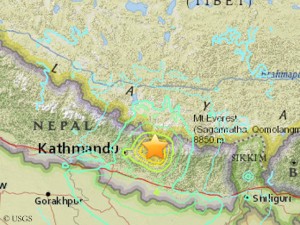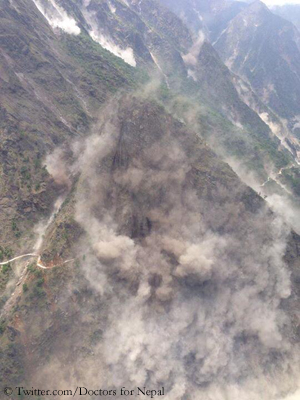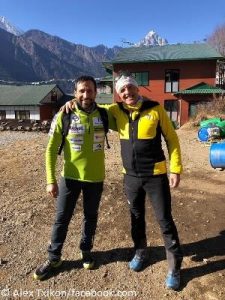New strong earthquake in Nepal
Nepal does not come to rest. Two and a half weeks after the devastating earthquake that killed more than 8,000 people, the country was hit by another strong quake today. The tremors reached a magnitude of 7.3 on the Richter scale (for comparison: the earthquake on April 25 had a magnitude of 7.8). According to the US Geological Survey and the German Research Centre for Geosciences in Potsdam the epicenter of the earthquake was located in the Dolakha District, 76 kilometers northeast of the capital Kathmandu. Quite exactly there is Bigu Gompa, one of the largest Buddhist nunneries in Nepal. The nuns had just started to rebuild those parts of the monastery which had been destroyed by the quake two weeks. The Rolwaling Valley is also not far away from the epicenter. The valley is very popular with trekkers who want to see the most famous mountain in the region, the 7134- meter-high Gauri Shankar. The Everest region is near too: Namche Bazaar, the main village of the Khumbu region, is only about 60 kilometers from the epicenter.
Landslides and rock fall
From there and other parts of the country, new landslides and rock fall were reported. Many houses collapsed. As with the first quake, it will still take some time before the full extent of the damage is clear. The number of the new victims is still rising. The government said five hours after the quake that more than 40 people lost their lives and over 1,100 were injured. Most deaths were registered in Dolakha followed by Sindhupalchowk, the district that had been hit worst by the first quake. There were fatalities in the capital Kathmandu too. Residents fled their homes in panic when the earth began to shake again. After the new strong earthquake, the UN Office for the Coordination of Humanitarian Affairs (OCHA) recalled that Nepal urgently needs further support. So far, only 13 percent of requirement was funded, OCHA said.









